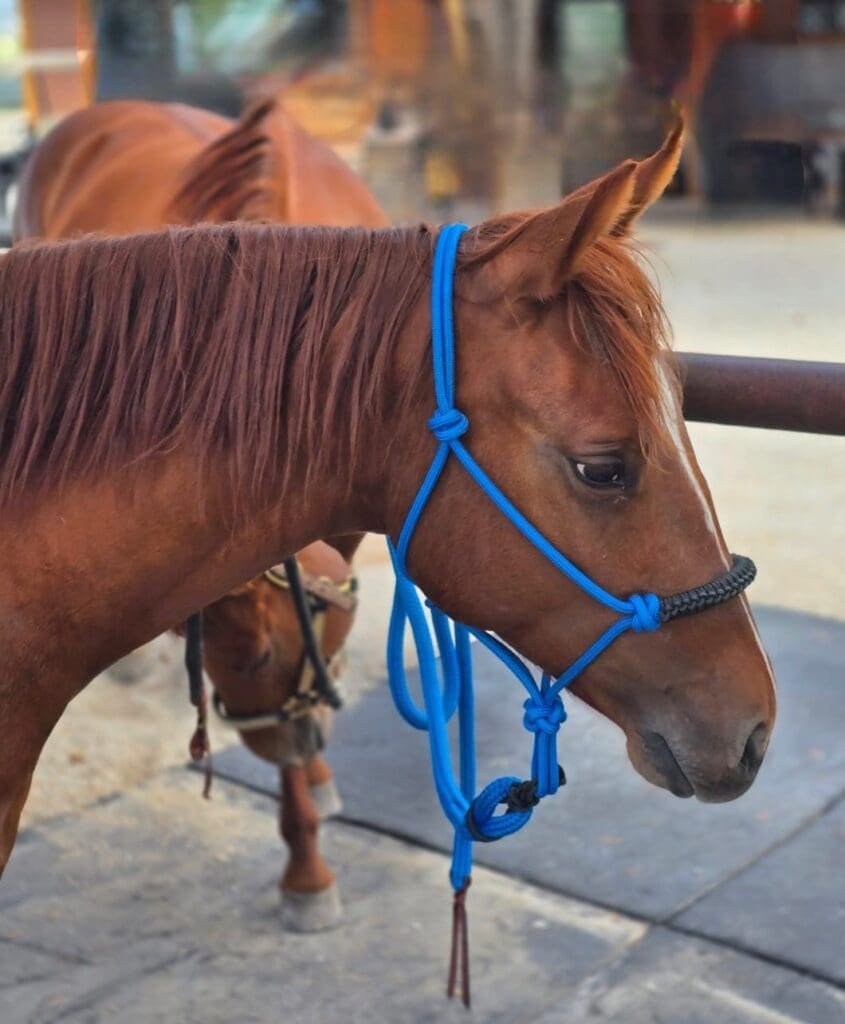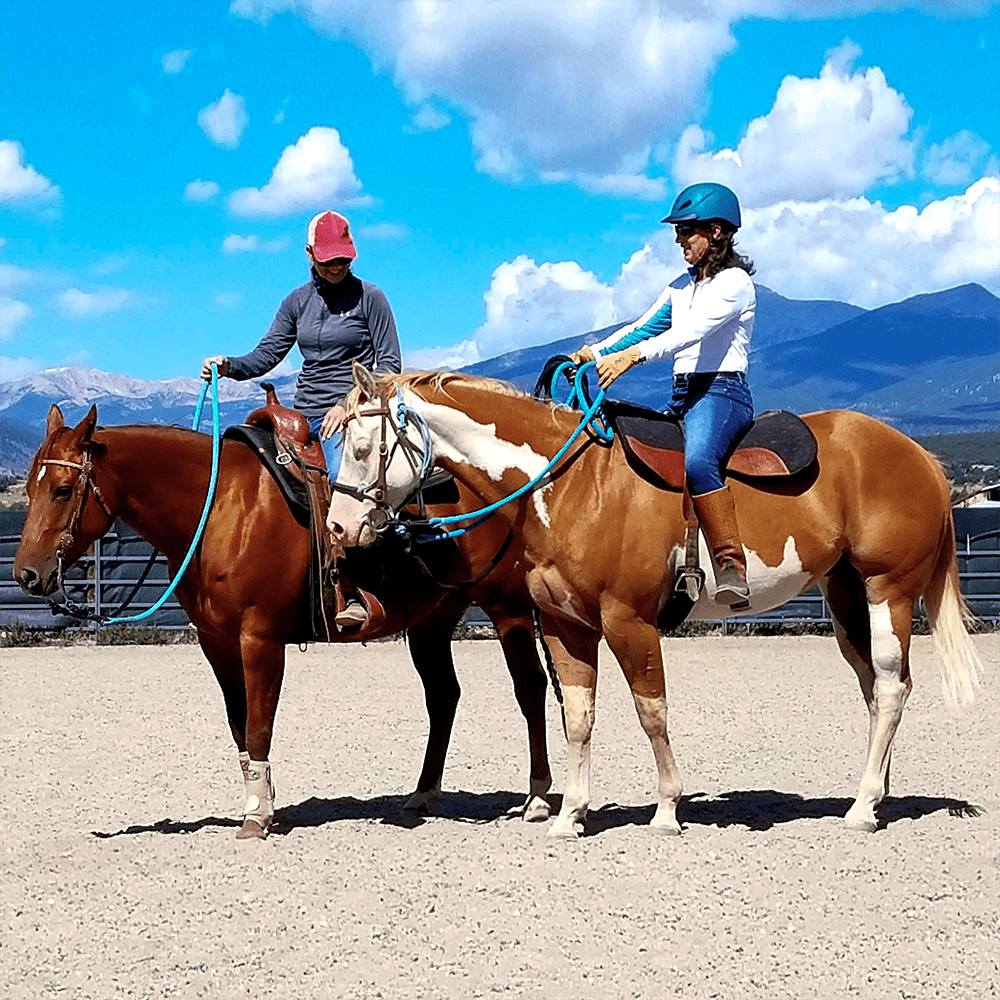
Rip Standing Quietly While Tied.
Patience is a Skill: Teaching Your Horse to Stand Tied
Patience may not be a trait we typically associate with horses. After all, they’re genetically wired to flee from discomfort, not to quietly wait it out. But standing tied is one of the most essential skills a horse must learn. Whether it’s for grooming, saddling, veterinary care, farrier work, trail riding, or trailering, a horse that ties well is a safer, more reliable partner. Yet, teaching this seemingly simple behavior takes time, commitment—and plenty of patience from us humans, too.
I’ve spent the last six months teaching my young colt, Rip, how to stand tied. It’s a slow, methodical process, starting with the most basic building blocks. First, he learned to yield to halter pressure and to stand still while I held the lead rope. Then, I began teaching him how to manage a rope when attached—helping him understand the boundaries and develop confidence in confinement. Eventually, we progressed to loosely tying him at a hitching rail, always with a steady companion horse nearby to serve as a calming role model.
That modeling is more important than many realize. Horses learn a great deal by observing one another, and seeing another horse stand calmly helps the lesson land more easily. Rip had about twenty separate tying lessons before we reached the milestone shown in this month’s video—his first solo tie session, with another horse about 40 feet away. It was just under three minutes, but it was a big moment.
In the video, you’ll see Rip work through his frustration. He gestures with his eyes, mouth, feet, and tail—clear signs of his inner dialogue. At one point, he defecates and becomes irritated when he can’t immediately smell it—an instinctive equine behavior that tells us a lot about their sensory world. But crucially, Rip never panics or challenges the rope. His training up to this point taught him how to manage being tied and to look inward for answers instead of fighting the restraint. When he finally settles and mentally accepts the situation, I approach immediately to release him. That timely relief reinforces the right choice.
This is the opposite of the old-school “patience post” method—where a horse might be tied for hours, with the idea that he’ll eventually wear himself out and give in. While that may create tolerance through sheer repetition, I prefer a more educational and incremental approach. Each lesson builds toward the whole, teaching the horse the why and how of standing tied, not just the what.
So here are a few questions for you to reflect on: Does your horse stand tied well? How did they learn that? Have you ever struggled with a horse that fusses, paws, or pulls back when tied? And why is this skill so vital?
From everyday grooming to emergency situations, standing tied is basic literacy for horses. It’s a behavior that helps keep horses and humans safe—and one that nurtures patience in both partners.
Watch the video below and see how many of Rip’s body language signals you can identify. What do you notice about his emotions and his learning process? Let me know what you think in the comments.
Looking to improve your horse’s ground manners and build their confidence while tied? Check out my favorite training tools in the online store—durable rope halters, sturdy 12-foot training lead ropes, and safety tie clips that allow horses to learn safely without panic. And for in-depth guidance, explore my online training memberships. Whether you’re a new rider or advancing your skills, you’ll find structured learning, video coaching, and support from a like-minded community.

